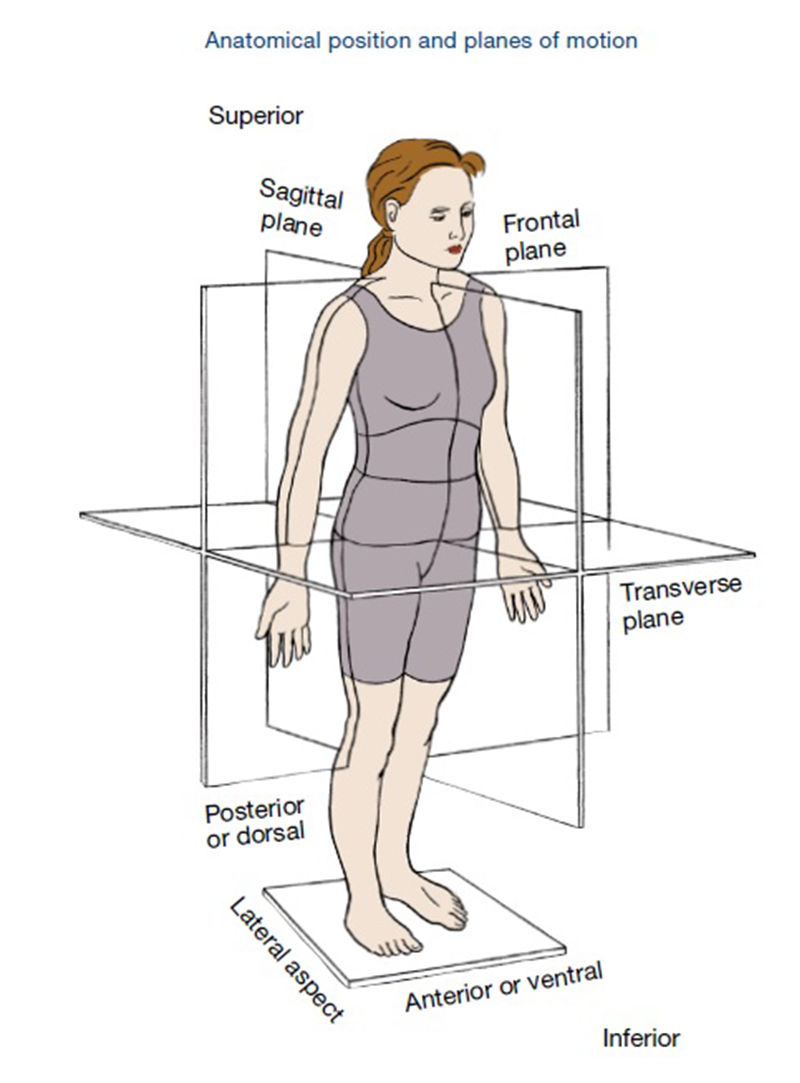Your body doesn’t move in one dimension. If it did, you wouldn’t be able to move your leg away from you, toward you, in front and behind you. Your body moves in three dimensions, and the training programs you design for your clients should reflect that. Designing an exercise program that utilizes all planes of motion will help your clients train their body in the same manner that it moves in real life.
There are three different planes of motion: sagittal, frontal, and transverse. In each plane, several different movements occur at the joints. Here’s a rundown of the different types of movement that occur within each plane:

Sagittal
- Flexion: Decreasing the angle between two bones
- Extension: Increasing the angle between two bones
- Dorsiflexion:Moving the top of the foot toward the shin (only at the ankle)
- Plantarflexion: moving the sole of the foot downward (pointing the toes)
Frontal
- Adduction: Motion toward the midline
- Abduction: Motion away from the midline of the body
- Elevation: Moving to a superior position (only at the scapula)
- Depression: Moving to an inferior position (only at the scapula)
- Inversion: Lifting the medial border of the foot
- Eversion: Lifting the lateral border of the foot
Transverse
- Rotation- Internal (inward) or external (outward) turning about the vertical axis of the bone
- Pronation- Rotating the hand and wrist medially from the bone
- Supination-Rotating the hand and wrist laterally from the bone
- Horizontal Flexion (adduction)- From the 90-degree abducted arm position, the humerus is flexed (adducted) in toward the midline of the body in the transverse plane
- Horizontal Extension (abduction)- Return of the humerus from horizontal flexion
Let's Examine Each Plane in a Bit More Detail
Dividing the body into left and right halves using an imaginary line gives us the sagittal plane. Any forward and backward movement parallel to this line occurs in the sagittal plane.
With the same imaginary line, divide the body into front and back halves and you have the frontal plane. Any lateral (side) movement parallel to the line will occur in the frontal plane.
Last, but certainly not least, we have the transverse plane, which divides the body into superior and inferior halves. Movement parallel to the waistline, otherwise known as rotational movement, occurs in the transverse plane.
For a clearer understanding, we can view the planes as they relate to exercises performed in a workout session. Below are a few exercises performed in each plane.
- Sagittal plane:bicep curl and forward or reverse lunges
- Frontalplane: dumbbell lateral (side) raise
- Transverse:horizontal wood chop
Once you are able to grasp the concept of movement within the three planes, client program design will be seamless. For further information on the planes of motion as you study, you can view this video.




 by
by 





